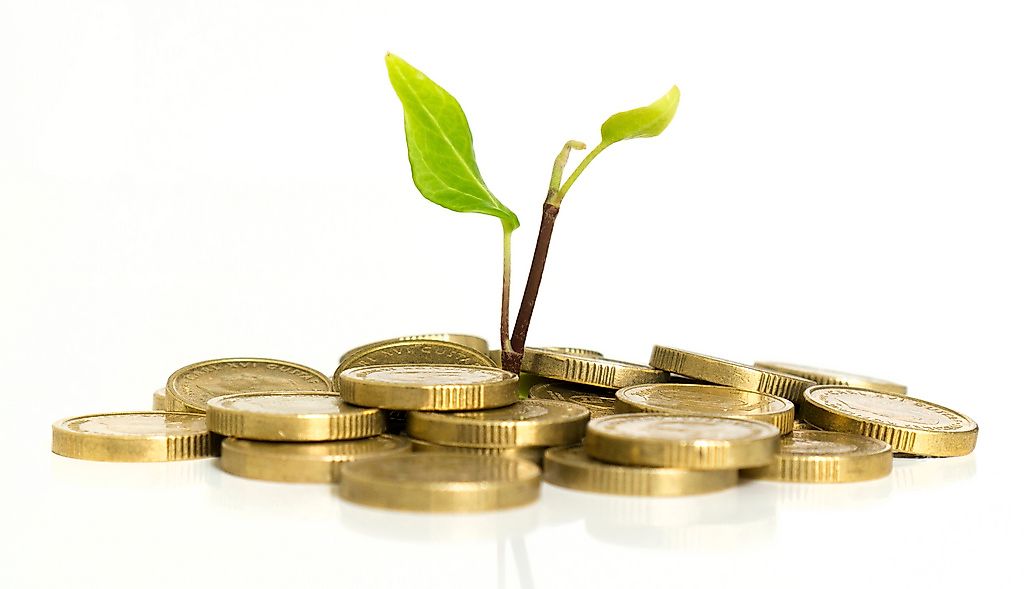Best Equity Growth Rates (S&P) In 2015 By Country

Equity value is the market value of a firm or company that includes short-term and long-term investments, long-term obligations, short-term obligations, and minority interests but minus total cash and all investment securities. It also adds stock options values, convertible securities, and other potential assets and liabilities. In short, it is the total value of business available to the owners and shareholders.
Jamaica
S&P 2015 Data shows that Jamaica saw the value of its S&P companies' stock equities soar by 75% in the year 2015, unmatched by any other nation. According to Bloomberg Business, Jamaica’s rebounding economy, foreign acquisitions, and investor confidence all boosted its stock exchange’s earnings in 2015. Stock equities are either common stock shares traded on the stock exchange or privately traded stocks in over-the-counter markets.
Hungary
Hungary also saw its stock equities soar to 28.8% in 2015 performing better than the stock exchanges of Frankfurt, Paris, or London. According to Reuters, its performance soared as a result of radical measures, bank taxes, and interest rates cuts. Both the Euro and Forint terms soared over 40% in 2015. This rise was also due to Hungary’s isolation from the Swiss franc cap being scrapped by Switzerland earlier in the year.
Ireland
Ireland had a banner year in 2015 with a 24.2% rise in its ISE stock equities. IPOs, bonds, and investment funds all profited in the process. New fund market offering proposals are attracting strong market interest. Investment fund managers and professional investors have started to invest in the ISE Fund Hub as well. The ISE debt markets had 551 new issuers belonging to sovereigns, financial institutions, and global corporates.
Denmark
Denmark was not left out of the 2015 stock market boom with a 22.4% rise in its OMX Copenhagen Index. Its KFX soared to an all-time high of 1039.70 in 2015. Its KFX, now the OMX Copenhagen Index is comprised of 20 of its most traded companies which are also part of the NASDAQ. Recovery is about to take its hold as Denmark’a budget deficit has shrunk, according to Danske Bank.
Latvia
Latvia also profited as its OMX Riga gained a substantial 18.3% increase in 2015. Its banking sector has shown a high level of performance in capitalization, liquidity, profitability, new lending, and improved loan portfolio. Its resident deposit rate also exceeded the country’s growth rate for the year 2015. Liquidity risks have also lowered substantially with liquid assets growing faster in the banking sector.
The next five stock exchanges that have performed better in 2015 are Germany (9.6%), Belgium (9.4%), Japan (9.1%), France (8.5%), and the Ivory Coast (7.6%).
Standard & Poor Global Rating is a research firm that provides data for index-based concepts that act as financial market indicators for financial investment indices that help institutional and retail investors. In short, it furnishes industry knowledge on the latest trends in investing and index innovation. Its main subjects are the financial members of the industry, governments, and corporate sector.
The importance of equity value to national companies is gleaned from its GNI and GDP especially true in emerging markets. Growth, productivity, distribution, and equity also factor in the growth of the national economy of a country. Distribution of equity is also crucial for the growth of a nation’s economy as racial equity is necessary for the continued growth of the world economy. According to PolicyLink, racial equity should be the norm to enable an equitable and prosperous economy for all.
Best Equity Growth Rates (S&P) In 2015 By Country
| Rank | Country | Change in Equity Value Among S&P Companies, 2015 |
|---|---|---|
| 1 | Jamaica | 74.9% |
| 2 | Hungary | 28.8% |
| 3 | Ireland | 24.2% |
| 4 | Denmark | 22.4% |
| 5 | Latvia | 18.3% |
| 6 | Germany | 9.6% |
| 7 | Belgium | 9.4% |
| 8 | Japan | 9.1% |
| 9 | France | 8.5% |
| 10 | Ivory Coast | 7.6% |











